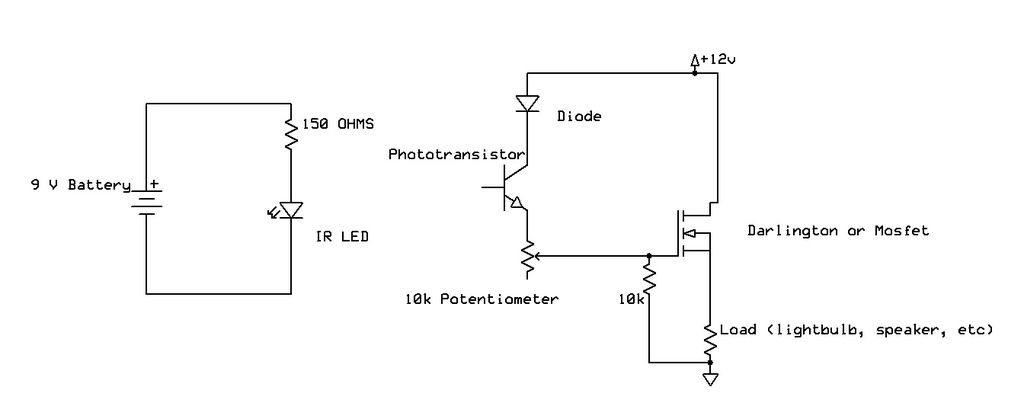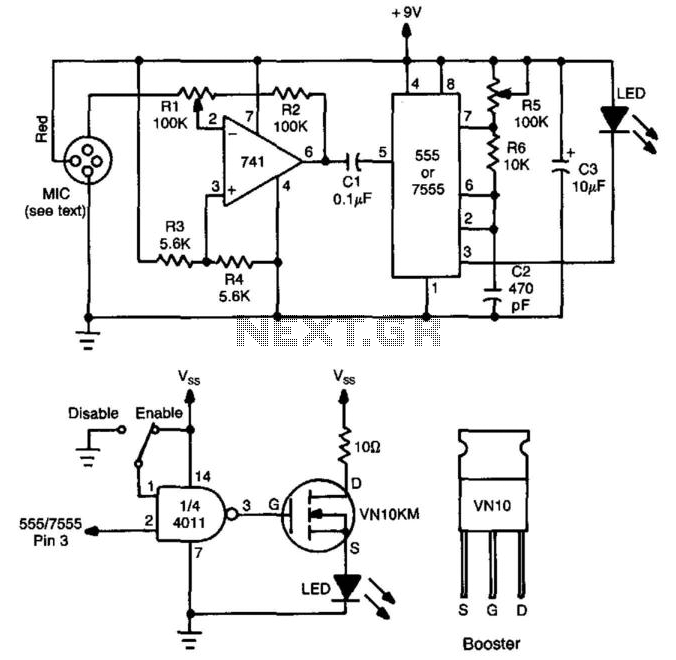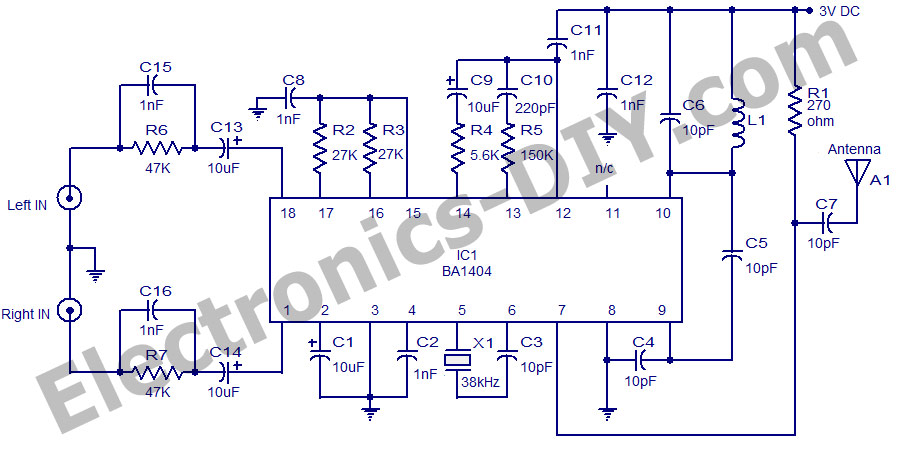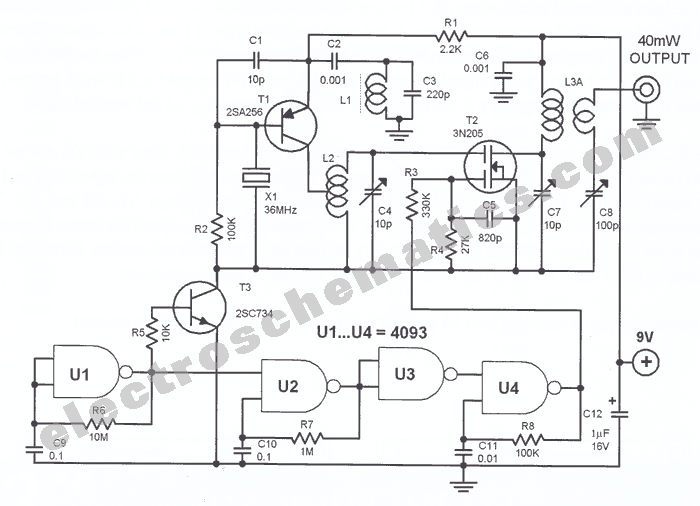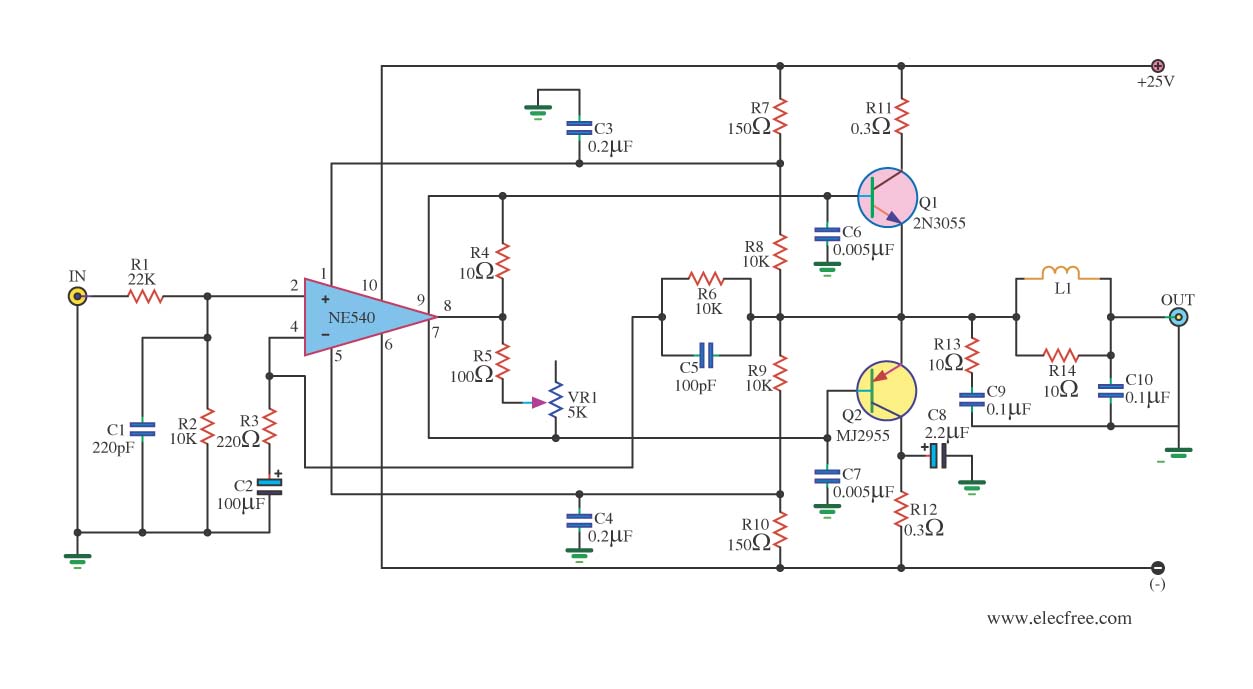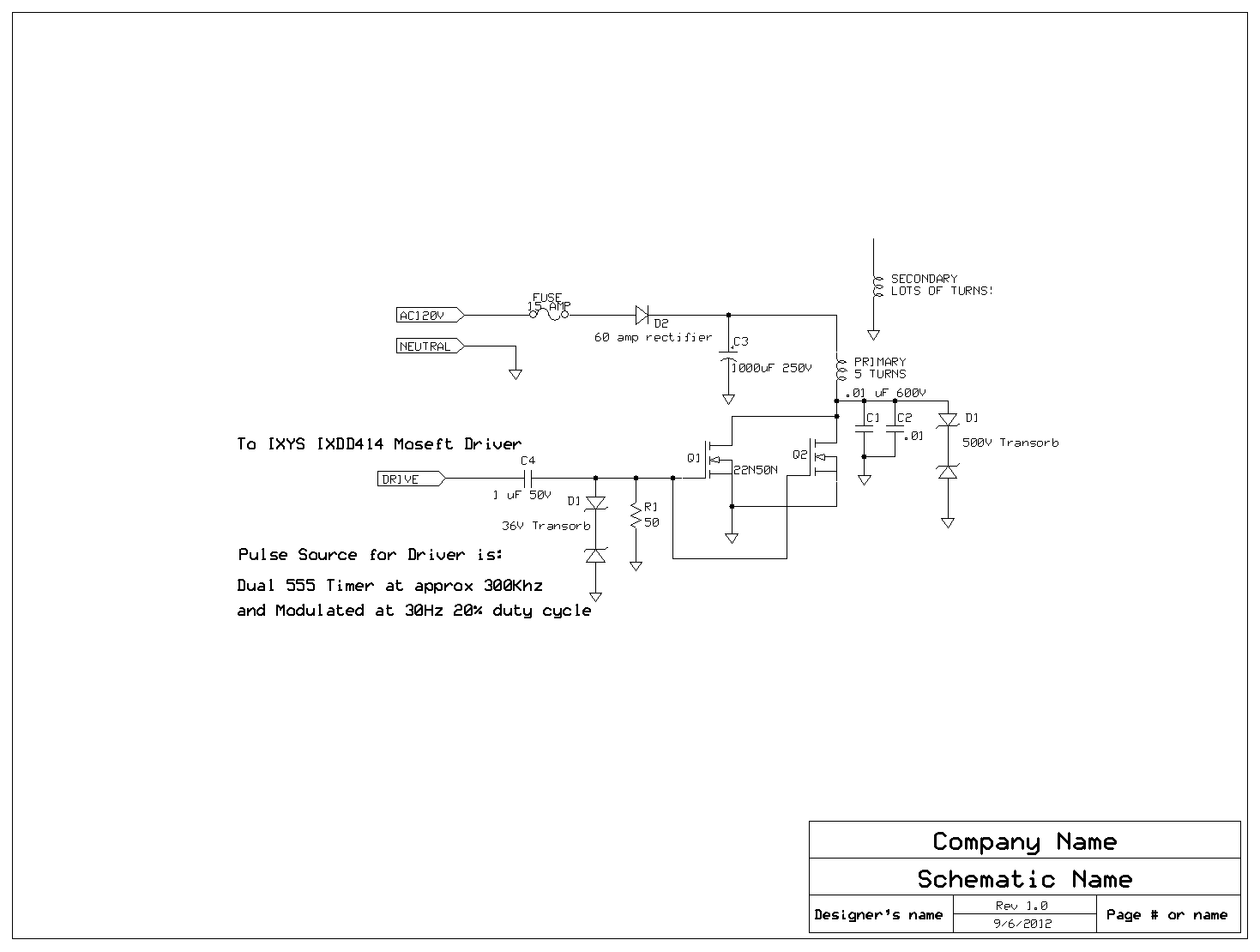
A small FM transmitter (SMD)s
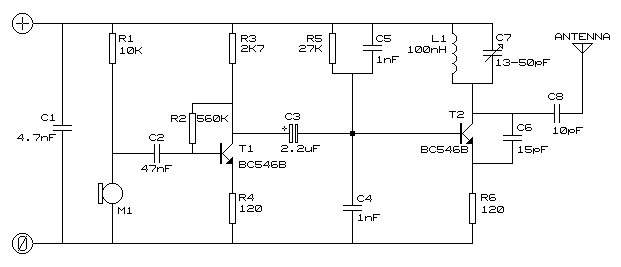
This SMD FM transmitter operates within a frequency range of approximately 80 to 115 MHz. Under optimal conditions, the signal can be received at a distance of around 200 meters. Although it is classified as low-power, its use may be illegal in certain regions. Depending on the electret microphone utilized, it may be necessary to adjust resistor R4 to set the gain of the pre-amplifier. Additionally, due to the quality factor (Q) of the LC components, which may not perform well with standard SMD parts, it may also be necessary to re-bias the final stage of the circuit. For the inductor, the ECM45T Series Inductor can be employed.
The SMD FM transmitter circuit is designed to operate effectively within the specified frequency range, making it suitable for various short-range audio transmission applications. The transmitter utilizes an electret microphone, which serves as the audio input source. The microphone's output is fed into a pre-amplifier stage, where resistor R4 plays a crucial role in adjusting the gain. This allows for fine-tuning of the audio signal strength, ensuring optimal performance based on the specific characteristics of the chosen microphone.
The circuit's LC components, which include inductors and capacitors, are pivotal in determining the frequency stability and efficiency of the transmitter. The quality factor (Q) of these components can significantly influence the transmission range and signal clarity. As such, careful consideration must be given to the selection of SMD components, as off-the-shelf parts may not provide the desired performance. If the Q factor is found to be inadequate, re-biasing the final amplification stage may be necessary to enhance signal integrity and transmission range.
For the inductor, the ECM45T Series Inductor is recommended due to its suitability for RF applications. This component is designed to deliver reliable performance in high-frequency circuits, contributing to the overall effectiveness of the transmitter. The careful selection and configuration of these components are essential for achieving the desired operational characteristics of the SMD FM transmitter, ensuring compliance with local regulations while maximizing transmission capabilities.This SMD FM transmitter has an operating frequency of about 80 to 115MHz. Under reasonable circumstances you will be able to receive its signal at a distance of about 200 meters. Although it is low-power, it might be illegal in your part of the planet. Depending on the electret microphone you use, you might have to tweek R4 to set the gain of the pre-amplifier. Depending on the Q of the LC-part (usually not very good when using off-the-shelf SMD parts) you may also have to re-bias the end stage of the circuit. For the coil you can use a ECM45T Series Inductor. 🔗 External reference
The SMD FM transmitter circuit is designed to operate effectively within the specified frequency range, making it suitable for various short-range audio transmission applications. The transmitter utilizes an electret microphone, which serves as the audio input source. The microphone's output is fed into a pre-amplifier stage, where resistor R4 plays a crucial role in adjusting the gain. This allows for fine-tuning of the audio signal strength, ensuring optimal performance based on the specific characteristics of the chosen microphone.
The circuit's LC components, which include inductors and capacitors, are pivotal in determining the frequency stability and efficiency of the transmitter. The quality factor (Q) of these components can significantly influence the transmission range and signal clarity. As such, careful consideration must be given to the selection of SMD components, as off-the-shelf parts may not provide the desired performance. If the Q factor is found to be inadequate, re-biasing the final amplification stage may be necessary to enhance signal integrity and transmission range.
For the inductor, the ECM45T Series Inductor is recommended due to its suitability for RF applications. This component is designed to deliver reliable performance in high-frequency circuits, contributing to the overall effectiveness of the transmitter. The careful selection and configuration of these components are essential for achieving the desired operational characteristics of the SMD FM transmitter, ensuring compliance with local regulations while maximizing transmission capabilities.This SMD FM transmitter has an operating frequency of about 80 to 115MHz. Under reasonable circumstances you will be able to receive its signal at a distance of about 200 meters. Although it is low-power, it might be illegal in your part of the planet. Depending on the electret microphone you use, you might have to tweek R4 to set the gain of the pre-amplifier. Depending on the Q of the LC-part (usually not very good when using off-the-shelf SMD parts) you may also have to re-bias the end stage of the circuit. For the coil you can use a ECM45T Series Inductor. 🔗 External reference
